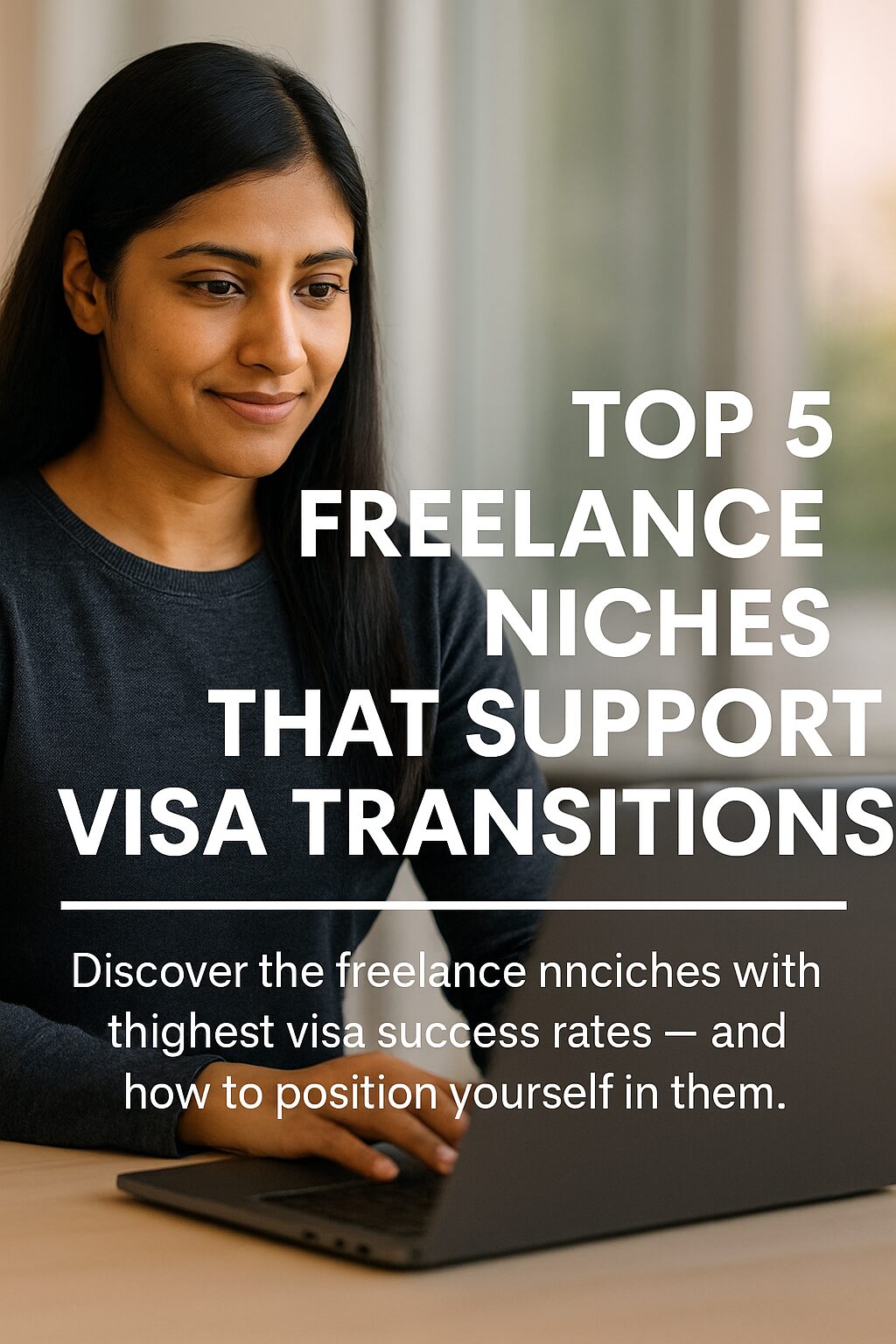7 Practical Skills That Help You Get Approved—and Get Paid
You don’t need a master’s degree or a six-figure job offer to get a visa.
In today’s digital world, practical skills can be your passport to long-term immigration and stable income.
This guide breaks down 7 in-demand digital skills that not only increase your freelance income—but also support visa applications like:
- O-1 (Extraordinary Ability Visa)
- E-2 (Investor Visa)
- EB-2 NIW (National Interest Waiver)
- Startup/Entrepreneur Visas
These skills have been used by real people to prove merit, gain sponsorship, or show national value in immigration petitions.
Let’s explore each one—and how to start learning it now.
1. Content Writing – Words That Build Influence
Why it matters:
Every business needs content.
Writers who can explain, educate, and convert readers are always in demand.
Used in immigration for:
- O-1 petitions showing public influence (e.g., blogs, articles)
- EB-2 NIW portfolios (educational reach)
How to learn it:
- Practice writing on Medium, LinkedIn, or your own site
- Study copywriting basics (free on YouTube)
2. Digital Marketing – Data-Driven Promotion
Why it matters:
Marketing equals money.
If you can manage ads, analyze traffic, or grow social accounts, companies want you.
Used in immigration for:
- Showing business value or ROI you created
- Proving high-income potential
How to learn it:
- Take Google’s free Digital Marketing course
- Run small test ads with $5 budgets
3. UI/UX Design – Making Digital Products Usable
Why it matters:
A beautiful app is useless if people can’t use it.
UI/UX designers improve the experience, not just the look.
Used in immigration for:
- Startup visa applications
- Product case studies showing user success
How to learn it:
- Free Figma and UX tutorials on YouTube
- Redesign an app and publish your thought process
4. Data Analysis – Insights That Drive Action
Why it matters:
Businesses sit on data but don’t know what it means.
Data analysts connect numbers to decisions.
Used in immigration for:
- Showing innovation or business impact
- Proving strategic skill sets
How to learn it:
- Google Data Analytics certificate (free/cheap)
- Analyze public datasets and publish your findings
5. No-Code Development – Build Without Programming
Why it matters:
You can now launch websites, tools, and even startups—without coding.
Used in immigration for:
- Founders showing product MVPs
- Freelancers with real projects to show
How to learn it:
- Try Bubble, Webflow, Carrd
- Build clones of popular tools (e.g., Airbnb, Notion)
6. AI Prompt Engineering – Communicating with Machines
Why it matters:
The world runs on AI—and people who can guide AI get ahead.
Used in immigration for:
- Innovative use cases for EB-2 NIW
- AI-focused roles for O-1 or startup visas
How to learn it:
- Practice with ChatGPT
- Build prompt libraries and publish AI-powered projects
7. Digital Strategy – Connecting the Dots
Why it matters:
Strategy ties skills together.
If you can plan a campaign, system, or workflow—you lead teams.
Used in immigration for:
- High-level roles (e.g., CMO, strategist)
- Showing leadership and problem-solving
How to learn it:
- Study real case studies
- Reverse engineer successful marketing or growth tactics
Bonus: How These Skills Build Your Immigration Case
| Skill | Helps With |
|---|---|
| Content, Design | Public recognition, impact, reach |
| Data, AI | Innovation, value creation |
| Strategy, Marketing | Leadership, job offers, business plans |
What immigration officers want:
Proof that you bring unique, valuable, globally relevant skills to the country.
Where to Showcase Your Skills
- Personal portfolio site (e.g., Notion, Carrd)
- Medium articles or Substack newsletters
- LinkedIn projects + recommendations
- Freelance platforms with reviews (Upwork, Contra)
Start Today – No Degree Required
You don’t need credentials. You need evidence of value.
📌 Start with ONE skill.
📌 Create ONE project.
📌 Publish it publicly.
Do this consistently, and you’ll build both income and immigration power.




